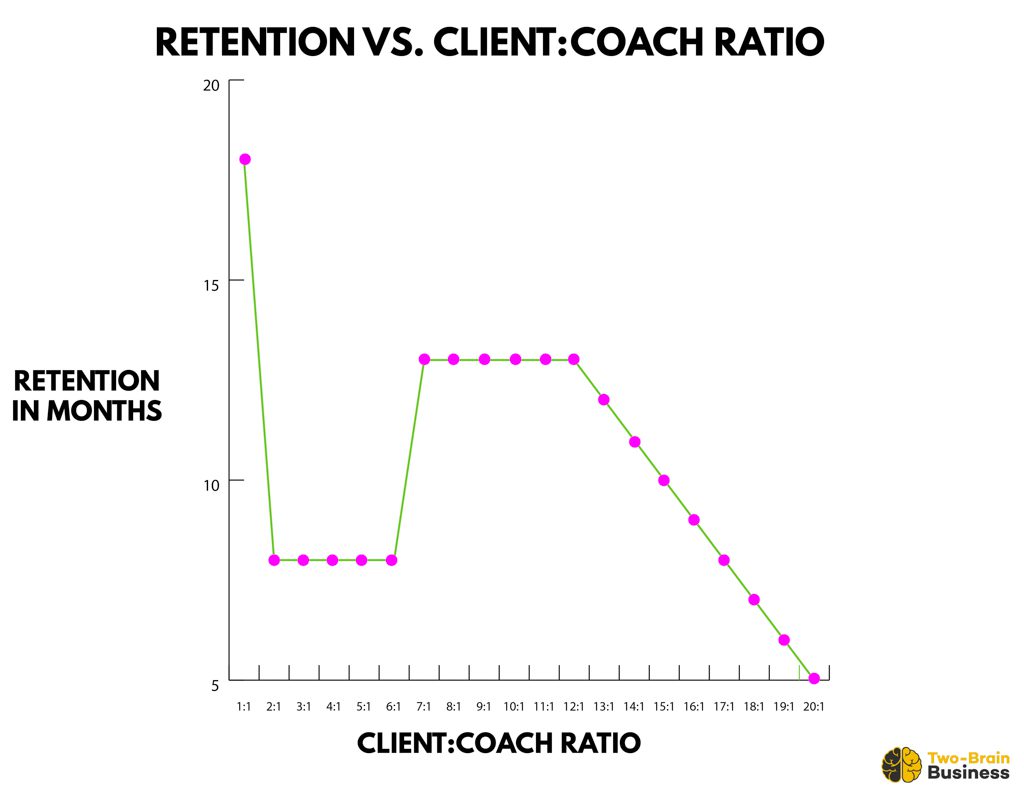We have the data.
There’s no more need for guessing. You don’t have to try and consider “culture” or balance what you like against what’s proven to work. You don’t have to wonder anymore.
In this series, I’m going to share proof from the largest data set ever gathered in the microgym industry. I’m going to tell you how many people should be in your classes. Then I’m going to tell you how much each class is paying you. Finally, I’m going to tell you what to do with those “classes” that are only attended by one or two people.
First, we’ll go over what the data says.
Two-Brain Data
One of the two key metrics in your business is length of engagement (LEG): how long a client is likely to stay in your gym.
Read more about LEG here: “Don’t Skip LEG Day”
The other key measurement of retention in your gym is adherence, which is how often a client shows up in relation to the plan they’ve purchased.
Read more here: “Retention and Adherence”
Both long-term retention and adherence are highest with 1:1 training. This makes sense: A client has an appointment to meet with someone, has paid a premium for that appointment and is likely to keep it. This 1:1 setting is also where clients make the fastest progress, so they have both intrinsic and extrinsic motivation to show up.
But retention and adherence drop for 2:1 training. There are a few reasons for this. In my experience, the added partner accountability is offset by partner conflict. For example: “Mary is tied up at work, so we’ll just cancel our 2:1 training for both of us and make it up next week.” Instead of one partner dragging the other into the gym, one partner can just as easily derail the other.
The numbers stay the same between two clients and six. But then they go up.
A class of seven people has the second-best retention and adherence rates after 1:1 training. The benefits of groups really start to show for the gym at seven people.
And those values don’t change much until you climb over 12 people. But retention and adherence values drop on the 13th person and then keep dropping faster and faster after that.
Now, I love coaching big groups. I can remember one crazy day when 32 people showed up on Saturday morning, and we had a riot. But the data makes sense: In groups larger than about a dozen, people can feel as if “no one will miss me if I’m not there,” or the coach’s attention might be split too many ways.
Of note: This retention data is based on one coach. Adding a second coach might solve part of the problem, and adding a client success manager (CSM) might solve the other part.

In summary: The people who do personal training have the best retention rates. But scaling up your service means coaching people in groups. Keep your groups in the seven to 12 range for maximal retention.
Don’t worry if you have huge groups or tiny groups. In the next post in this series, I’ll tell you how to identify your best and worst slots. And in the final post, I’ll tell you how to drop your worst groups.
Other Media in This Series
“What Are Your Group Classes Worth?”
“Fill It or Kill It: What to Do With Tiny Classes”

